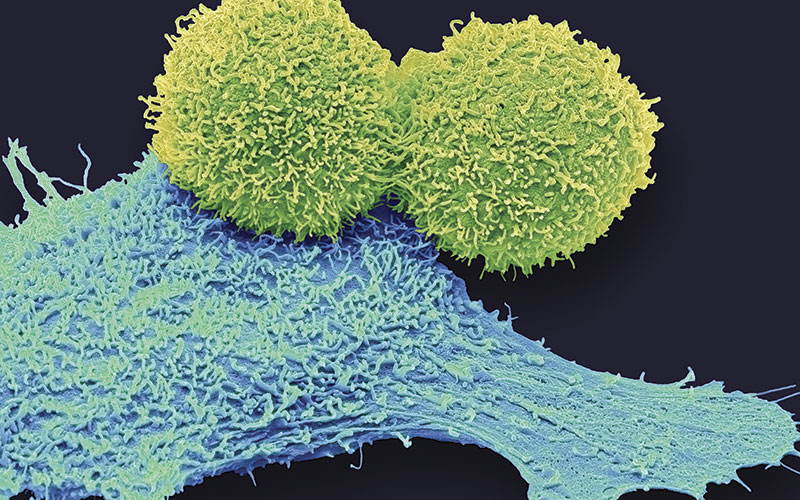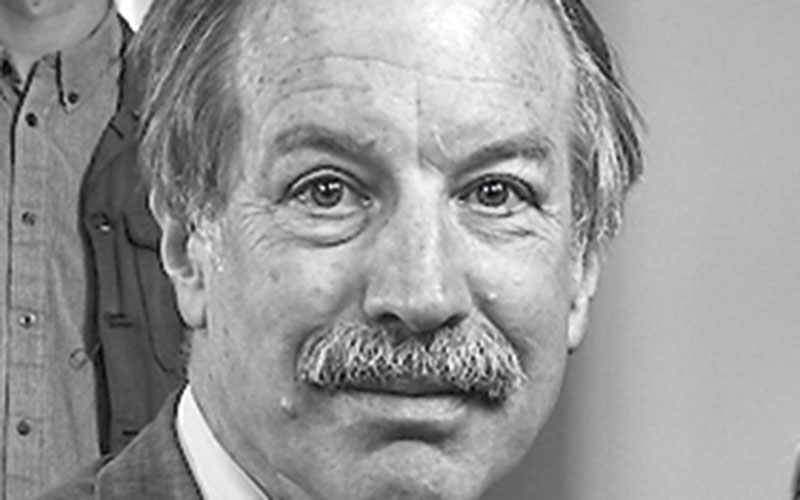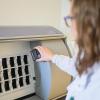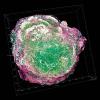In the UK, one in two of us can expect to get cancer in our lifetimes. With such a high disease burden, efforts to prevent cancer are at least as important as efforts to treat it.

Jack Cuzick, a scientist at Cancer Research UK and Queen Mary University of London, has been working on cancer prevention for nearly 40 years. He was first counted among the top 1% of highly cited researchers in the world in 2007. Since 2014 he has been in the top 1% every year, including 2018.
His work on prevention and screening started out in the 1980s with the discovery that certain drugs that were used to treat breast cancer, such as tamoxifen, also appeared to have a preventative effect. Patients who took the drug to treat a cancer in one breast were less likely to develop cancer in the other breast after a course of this treatment. There were other drugs too that appeared to have an even bigger effect on reducing the occurrence of new tumours.
Developing a model
“We got pretty excited about these drugs,” says Cuzick. “We thought they could be a drug to prevent breast cancer.”
These drugs still have side effects, so they would only be a viable option among high-risk populations. Cuzick and his colleagues developed a model to find out who was at high risk of breast cancer, to guide who should be considered for more screening and preventative therapy. Lower-risk patients need less screening than the average interval of three years, whereas higher-risk patients need it more frequently.
This became known as the Tyrer-Cuzick model and was widely adopted throughout the field. Cuzick is still working on ways to hone the model further. “We’re finding better ways of predicting risk. Genetic scores are turning out to be very useful, for example,” he says.
Recently, Cuzick’s work has turned to other drugs that could have a preventative effect against cancer. In one influential piece of research, Cuzick found that aspirin has a dramatic effect on reducing the incidence of cancers of the colon, stomach and oesophagus by up to 30%.
“It was a very striking effect,” says Cuzick. Aspirin also had an effect, albeit a more modest one, on other cancers, including lung, breast and prostate cancer. “It looks like the second most important thing you can do to prevent cancer, second only to stopping smoking.”
The effect of aspirin is about equal in magnitude to exercising and avoiding obesity. There are some people, of course, for whom taking aspirin is not wise. People who have bleeding in the stomach, for example, would be best to avoid it, as aspirin can worsen the problem. But for people who can tolerate aspirin, Cuzick believes it could be an excellent – and very cheap – effective cancer preventative.
“We think most people between the ages of 50 and 70 should take a low dose of aspirin for 10 years,” says Cuzick. “That may have a bigger impact on cancer rates than anything other than those lifestyle factors. That’s why we’re so excited.”
After taking aspirin for about three to five years, patients see the preventative benefits for about 20 years, according to Cuzick’s research. But there are several more hurdles to overcome before this recommendation goes mainstream. Cuzick and his colleagues still don’t know why aspirin has this protective effect.
 Cuzick’s honours and awards
Cuzick’s honours and awards

2003 – Fellow of the Academy of Medical Sciences
2014 – Cancer Research UK Translational Cancer Research Team Prize
2015 – The American Cancer Society Medal of Honour
2016 – Elected Fellow of the Royal Society
2017 – Cancer Research UK Lifetime Achievement in Cancer Research Prize
2017 – CBE for services to cancer prevention and screening.
Understand the mechanisms
“Our work now is to try to understand better who is going to benefit more from aspirin, and who is more likely to have side effects,” says Cuzick. “If we understand the mechanisms we can design drugs that could be even better than aspirin for cancer prevention.”
Some of the most exciting other compounds that could be useful cancer prevention drugs are also widely accessible. This has the double benefit of being less expensive and often having to go through a less-intensive clinical trial process, as they are already known to be safe to consume. Cuzick’s team is interested in the properties of commonly available food ingredients like curcumin (which is found in turmeric), pomegranate juice and green tea.
Another tack Cuzick is pursuing is to see what existing drugs could be re-purposed for cancer prevention. For example, metformin, which is used to treat diabetes, is thought to have a degree of anti-cancer effects. Bisphosphonates, which are often used to treat osteoporosis to combat the loss of bone density, are also thought to be a good candidate for investigating as a cancer preventative.
In many cases with cancer prevention, there are the issues of effectiveness and toxicity. If a drug is an excellent preventative but has severe side effects – such as Cuzick’s early discovery with tamoxifen – it is not going to be a promising drug to roll out to broad patient groups or healthy people. As a result, it may save lives, but it won’t necessarily make a dent in cancer cases on a population level. On the other hand, more innocuous treatments, such as aspirin, are particularly exciting as there is the potential to give them to all but the people most sensitive to the drug. If it does prove effective, it could lead to preventing a great many more cancers in the long run.
The next challenge
For Cuzick, being among the top 1% of highly cited scientists is a welcome award, but he says that he measures the impact of his science in more immediate terms: “Reduced incidence [of cancer] and ultimately mortality in those taking [these drugs].”
With this aim in mind, the next challenges are to improve the uptake of drugs that are well-established as effective cancer preventatives. These include anti-oestrogenic compounds for breast cancer and “aspirin for all”, says Cuzick.
After a long and impactful career, Cuzick still has some of his own goals to pursue. Hopefully they might include a few more anti-cancer compound discoveries. “Discovery and validation of new agents is key,” he says. “But given the time scale, I may just be able to initiate some projects that others carry on to a conclusion.”
Image Credit | Science Photo Library




